The Gold Coast is a city situated in the southeast corner of Queensland, a state in northeastern Australia. It is renowned for its long sandy beaches, fantastic surfing opportunities, and breathtaking skyline.
But the Gold Coast is also a paradise for bird lovers. With an array of habitats such as wetlands, mangroves, eucalypt forests, and coastal bushland, the Gold Coast provides a perfect setting for bird-watching.
Over 300 bird species can be seen on the Gold Coast, making it a popular destination for bird enthusiasts from around the world.
This article explores the birds of the Gold Coast, highlighting their unique features and habits, where to spot them, and how their conservation is being managed.
1. Pheasant Coucal
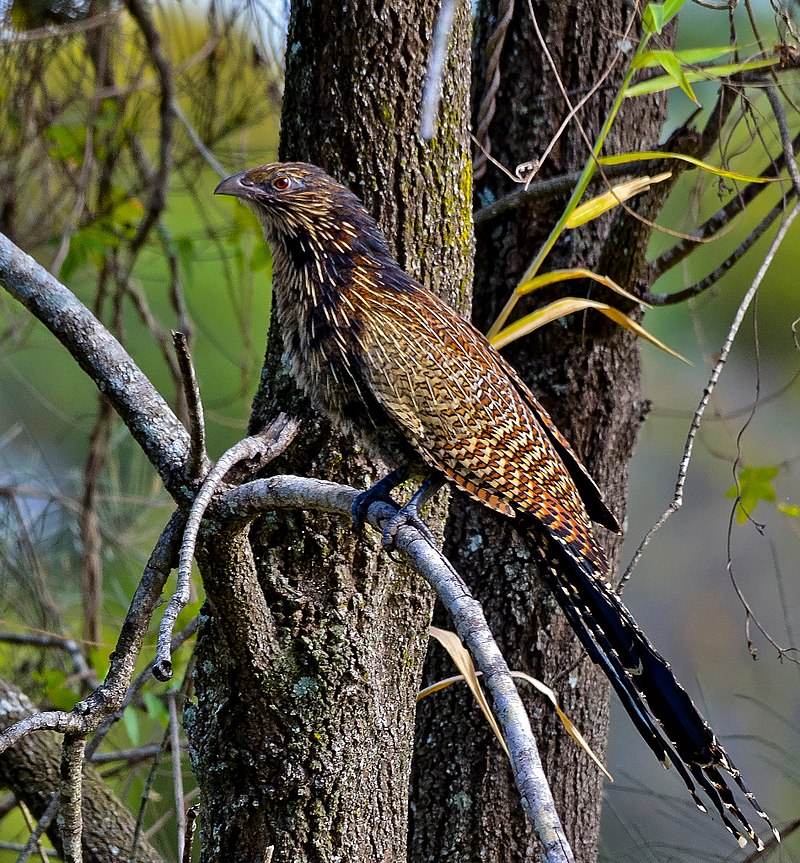
The Pheasant Coucal is a species of cuckoo native to Australia, Timor and New Guinea.
It can be found in subtropical or tropical moist lowland forests as well as mangrove forests but has also adapted well to agricultural areas such as cane fields in Northern Australia.
This makes it an unusual bird among the Australian cuckoos since unlike most other birds from this family, it doesn’t rely on its hosts for incubation and raising offsprings – instead, it does all that by itself.
The female typically lays three eggs which are oval-shaped with light blue colouring that fades over time.
Pheasant coucals have dark brown feathers with some lighter markings around their necks and wings making them look quite unique compared to other birds within the same family.
Scientific classification:
| Kingdom | Animalia |
| Phylum | Chordata |
| Class | Aves |
| Order | Cuculiformes |
| Family | Cuculidae |
| Genus | Centropus |
| Species | C. phasianinus |
Also Featured In: Most common birds in Australia, Birds that Charles Darwin Studied
2. Bush Stone-Curlew
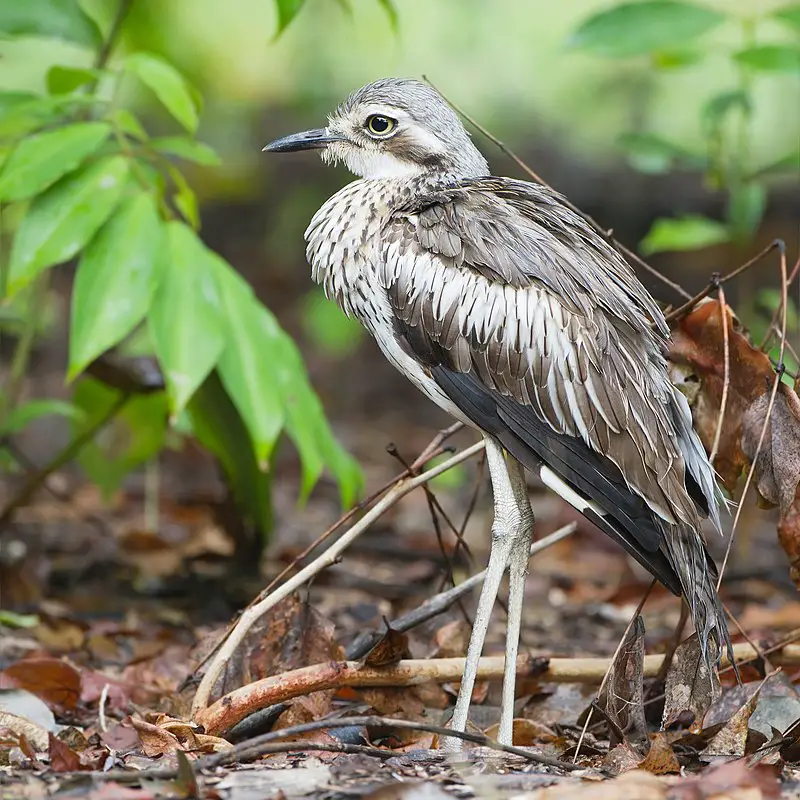
The Bush Stone-Curlew, also known as the Iben Bird, is an endemic species of Australia found in open plains and woodlands. It has grey-brown coloration with dark streaks and large eyes, making it easy to identify.
During night time this bird looks for invertebrates such as insects by slowly stalking its prey. Its long legs allow it to easily traverse across vast landscapes while hunting for food.
The Bush Stone-Curlew plays a vital role in maintaining balance within the ecosystem through controlling insect population growth which can be damaging if not monitored carefully.
Unfortunately due to human interference this species has become endangered so all efforts should be made towards conserving them before they are lost forever from our planet’s biodiversity.
Scientific classification:
| Kingdom | Animalia |
| Phylum | Chordata |
| Class | Aves |
| Order | Charadriiformes |
| Family | Burhinidae |
| Genus | Burhinus |
| Species | B. grallarius |
Also Featured In: Birds of Far North Queensland, Native Birds Of Mackay
3. Great Knot
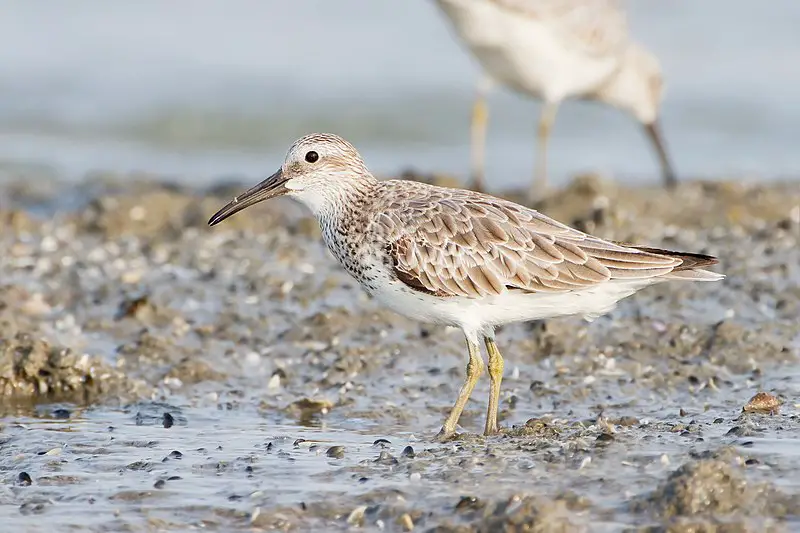
The Great knot is an impressive small wader species belonging to the Calidrid family. It has a slender bill and grey colouring, which is what inspired its genus name “Calidris” from Aristotle’s term for some waterside birds.
During breeding season it inhabits tundra in northeast Siberia where it builds nests on the ground and lays around four eggs at one time.
Its diet consists of insects, crustaceans, molluscs and worms which are found along coastal areas during migration; they may also roost together with other bird species such as Bar-tailed Godwit or Dunlin when not migrating or breeding.
The Great Knot’s population numbers have recently declined due to hunting pressure, loss of habitat through climate change and pollution-related incidents – making them vulnerable conservation concern.
Scientific classification:
| Kingdom | Animalia |
| Phylum | Chordata |
| Class | Aves |
| Order | Charadriiformes |
| Family | Scolopacidae |
| Genus | Calidris |
| Species | C. tenuirostris |
Also Featured In: Kuwait Birds,
4. Dusky Moorhen
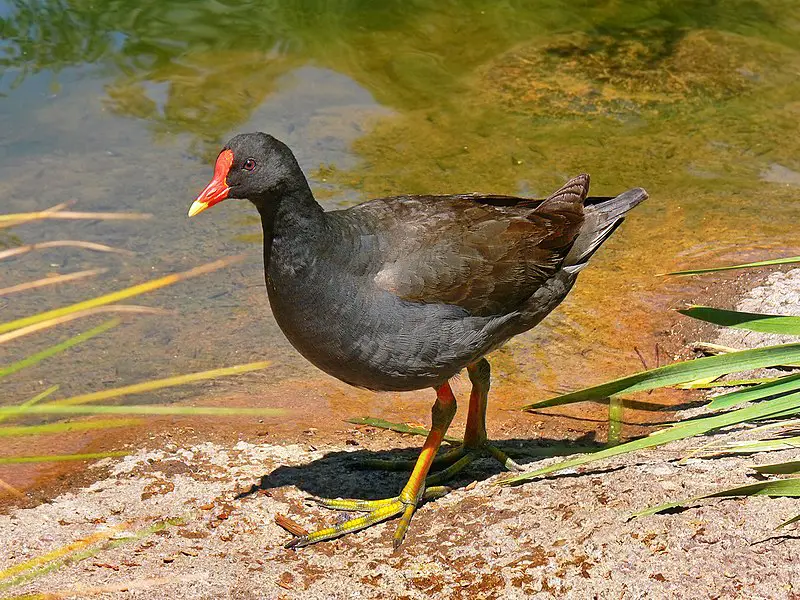
The dusky moorhen is a species of bird found in India, Australia, New Guinea, Borneo and Indonesia. It has dark plumage with an iridescent green sheen on its back and wings.
Its beak and legs are yellow-orange in color. The tail is long and pointed. Dusky moorhens live around freshwater wetlands such as swamps or ponds where they feed largely on aquatic vegetation but may also eat small insects or fish if available.
They often live alongside other birds from the same genus like purple swamphens or Eurasian coots which have similar appearances but different habitats preferences than their own species’.
Although timid when approached by humans these birds still make fascinating subjects for observation due to their unique behaviors within family groups that can help us understand more about them.
Scientific classification:
| Kingdom | Animalia |
| Phylum | Chordata |
| Class | Aves |
| Order | Gruiformes |
| Family | Rallidae |
| Genus | Gallinula |
| Species | G. tenebrosa |
Also Featured In: Timor-Leste birds, Birds that Live Near Adelaide
5. Red-Tailed Tropicbird
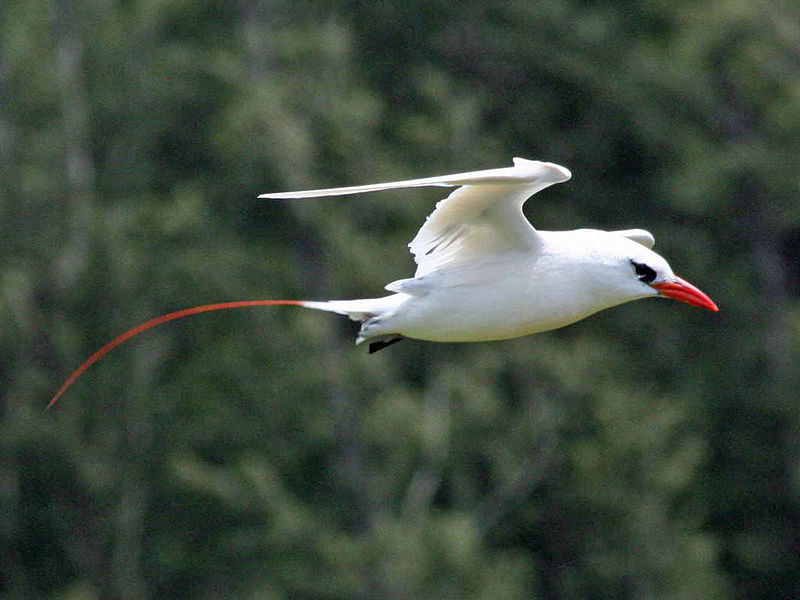
The Red-tailed Tropicbird is an exotic seabird found in tropical areas of the Indian and Pacific Oceans. It has a striking appearance, with mostly white feathers and a black mask covering its eyes.
Its bill is bright red, making it stand out against its pale plumage. Both males and females have similar looks to one another – unlike many other birds species where the male looks significantly different from that of the female.
Described by Pieter Boddaert in 1783, this impressive bird can be seen soaring through tropical skies looking for food either alone or within small flocks made up of several individuals at once.
Scientific classification:
| Kingdom | Animalia |
| Phylum | Chordata |
| Class | Aves |
| Order | Phaethontiformes |
| Family | Phaethontidae |
| Genus | Phaethon |
| Species | P. rubricauda |
Also Featured In: Mauritius birds, Common Republic of Nauru Birds
6. Greater Crested Tern
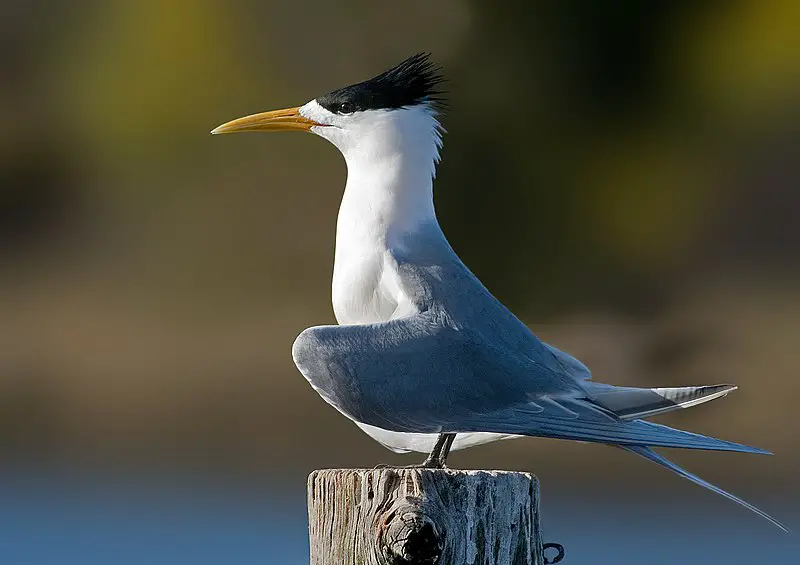
The Greater crested tern is a large bird of the family Laridae, found in tropical and subtropical regions across the Old World.
It has five subspecies which breed from South Africa to Australia, before migrating away for winter.
The distinctive crest feathers on its head give it its name and set it apart from other species like gulls or skuas.
They have wide wingspans that allow them to fly swiftly over oceans or coasts with ease – they are known as swift terns because of this.
The greater crested tern feeds mainly off fish caught at sea by plunge-diving into waters up to 10m deep; an impressive feat indeed.
With their bright white plumage, black caps and long yellow bills they stand out against any landscape – even on land these birds can be seen enjoying life along coastlines.
Scientific classification:
| Kingdom | Animalia |
| Phylum | Chordata |
| Class | Aves |
| Order | Charadriiformes |
| Family | Laridae |
| Genus | Thalasseus |
| Species | T. bergii |
Also Featured In: Maldives birds, Birds of Goa
7. Wedge-Tailed Shearwater
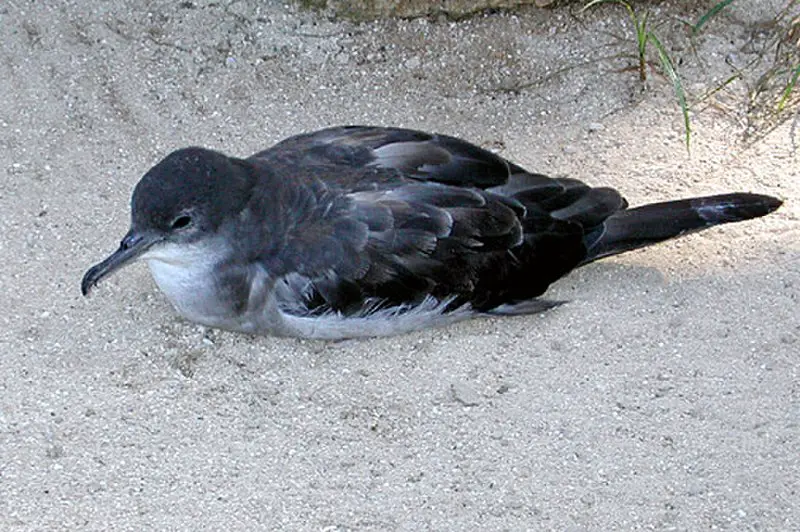
The wedge-tailed shearwater is a medium-large seabird found in the tropical Pacific and Indian Oceans. It is one of several species referred to as muttonbirds, along with the sooty and short-tailed shearwaters.
These birds have long wings that allow them to soar for extended periods over large bodies of water while searching for food such as fish, squid, crustaceans, cephalopods and other marine invertebrates.
During mating season they nest on islands or small sandy beaches where both parents take turns caring for their chicks until they fledge at around two months old.
Wedge-taileds are an important part of many island cultures who traditionally hunt these birds during certain times of year when populations peak due to migration patterns.
Scientific classification:
| Kingdom | Animalia |
| Phylum | Chordata |
| Class | Aves |
| Order | Procellariiformes |
| Family | Procellariidae |
| Genus | Ardenna |
| Species | A. pacifica |
Also Featured In: Seychelles birds, Birds that Live in the Ocean
8. Black-Browed Albatross
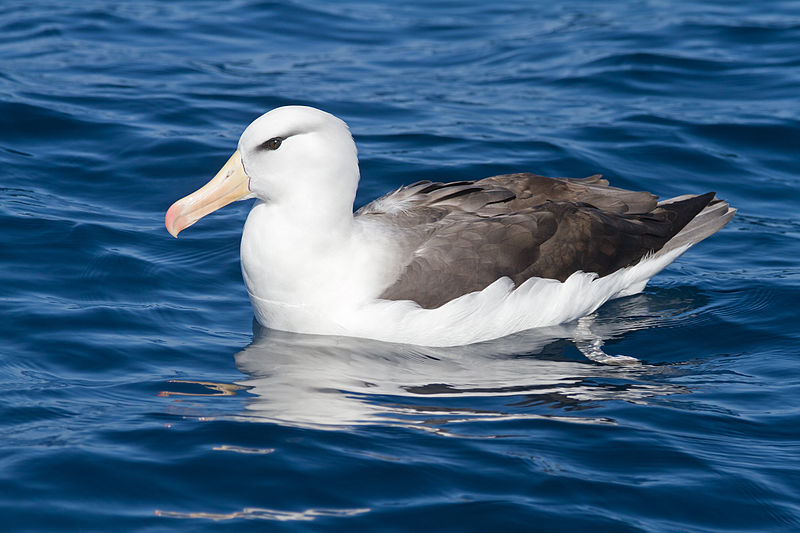
The Black-browed Albatross is a majestic seabird that belongs to the albatross family known as Diomedeidae.
It is an impressive bird, with its black beak and brow contrasting against white plumage on its wings and body.
The most widespread and common member of this group, it can often be seen flying around oceans in different parts of the world.
These birds share many features with other members of their order Procellariiformes, such as shearwaters, fulmars, storm petrels and diving petrels; they all have long wingspans for gliding effortlessly above water surfaces.
They feed mainly by scavenging or hunting small fish near sea surface while flying low over waters.
Its population has unfortunately declined due to commercial fishing vessels which attract them closer to shore resulting in entanglement into fishing nets leading them towards mortality.
Scientific classification:
| Kingdom | Animalia |
| Phylum | Chordata |
| Class | Aves |
| Order | Procellariiformes |
| Family | Diomedeidae |
| Genus | Thalassarche |
| Species | T. melanophris |
Also Featured In: Antarctica Birds, Most Common Birds in South America Birds
9. Northern Giant Petrel
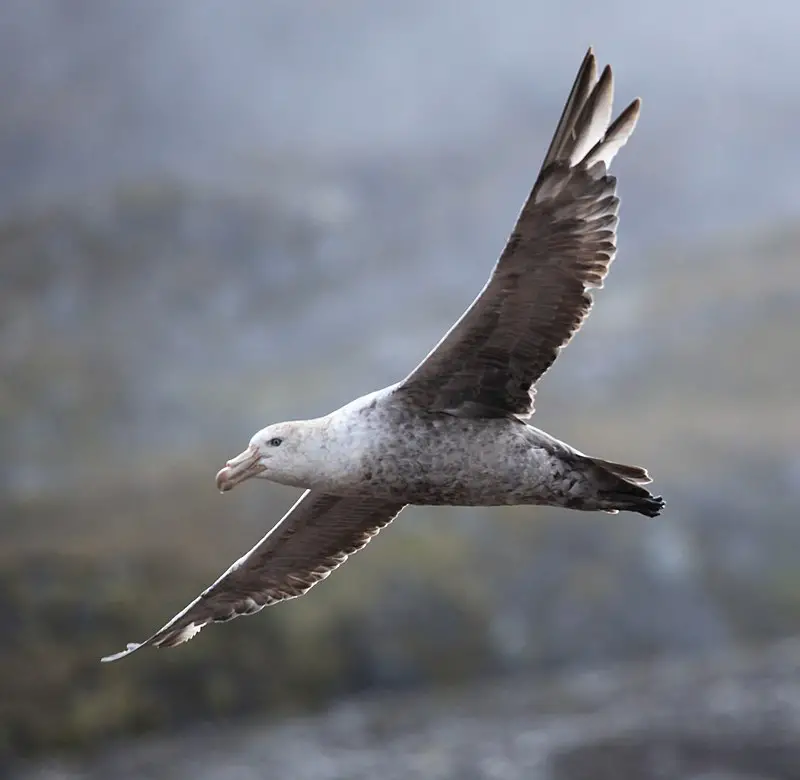
The Northern Giant Petrel is a large seabird of the southern oceans and belongs to the Macronectes family. It has broad distribution, overlapping with that of its cousin -the Southern Giant Petrel- but slightly northward.
First described in 1912 by Australian ornithologist Gregory Mathews as a subspecies of the Southern Giant Petrel, it reaches up to 75 cm long and weighs 3 kg on average.
Its plumage is dark grey above while white below, having black bill tipped with yellow or pink color along an orange line running from base to tip; its feet are also bright yellowish-orange in hue.
This species feeds mainly on fish and squid near coastal waters or scavenges carcasses farther away out at sea during winter months when food sources become scarce closer inland.
Scientific classification:
| Kingdom | Animalia |
| Phylum | Chordata |
| Class | Aves |
| Order | Procellariiformes |
| Family | Procellariidae |
| Genus | Macronectes |
| Species | M. halli |
Also Featured In: Patagonia Birds You Should Know, Common Birds that Live around Ushuaia
10. Gould’s Petrel
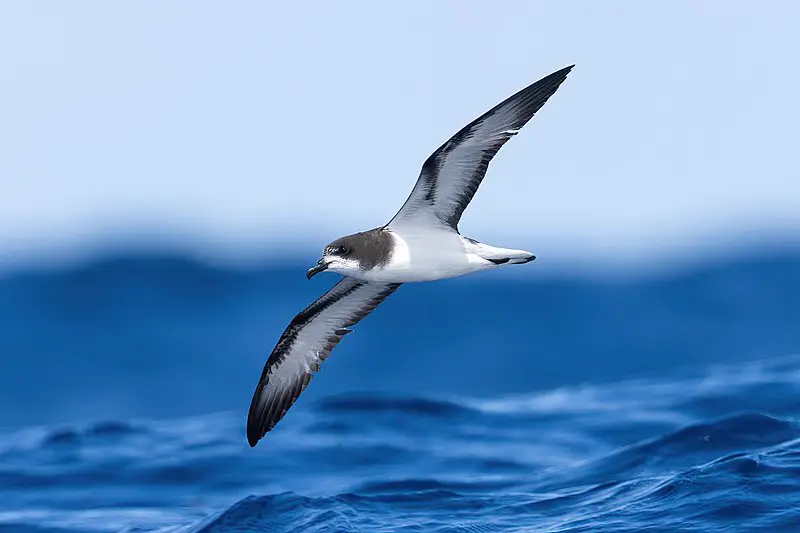
Gould’s petrel is a small seabird belonging to the Procellariidae family. It has white underparts and dark brown and grey upper parts with a distinctive ‘M’ pattern across its wings.
Named after English ornithologist John Gould, this species can be found in the Southern Atlantic Ocean, Indian Ocean and Tasman Sea regions.
They feed mainly on cephalopods but also take fish when available.
Although their population size remains relatively stable for now, they are threatened by invasive predators such as cats or rats that inhabit nesting islands close to human populations around Australia and New Zealand land masses where these birds breed during summer months from October-February each year.
Scientific classification:
| Kingdom | Animalia |
| Phylum | Chordata |
| Class | Aves |
| Order | Procellariiformes |
| Family | Procellariidae |
| Genus | Pterodroma |
| Species | P. leucoptera |
Also Featured In: Cook Islands birds,
11. Kermadec Petrel
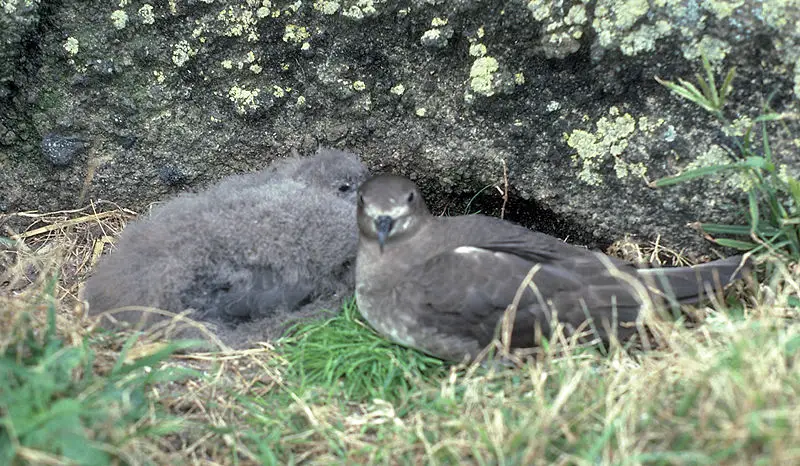
The Kermadec petrel is a species of gadfly petrel that can be found in the Pacific Ocean from Lord Howe Island to the Juan Fernández Islands.
It has a wingspan of 100 cm and is usually 38 cm long, with three distinct morphs – light, dark and intermediate.
This bird feeds on squid, fish and other marine creatures as its primary food sources. The Kermadec petrel breeds in colonies near oceanic islands or offshore rocks during breeding season but migrates further away when not breeding.
Although it may rarely be seen west of Lord Howe island, this species remains quite widespread throughout its range due to its strong ability to fly over long distances at high speeds for extended periods of time.
Scientific classification:
| Kingdom | Animalia |
| Phylum | Chordata |
| Class | Aves |
| Order | Procellariiformes |
| Family | Procellariidae |
| Genus | Pterodroma |
| Species | P. neglecta |
Also Featured In: Easter Island Birds You Should Know,
12. Glossy Black Cockatoo
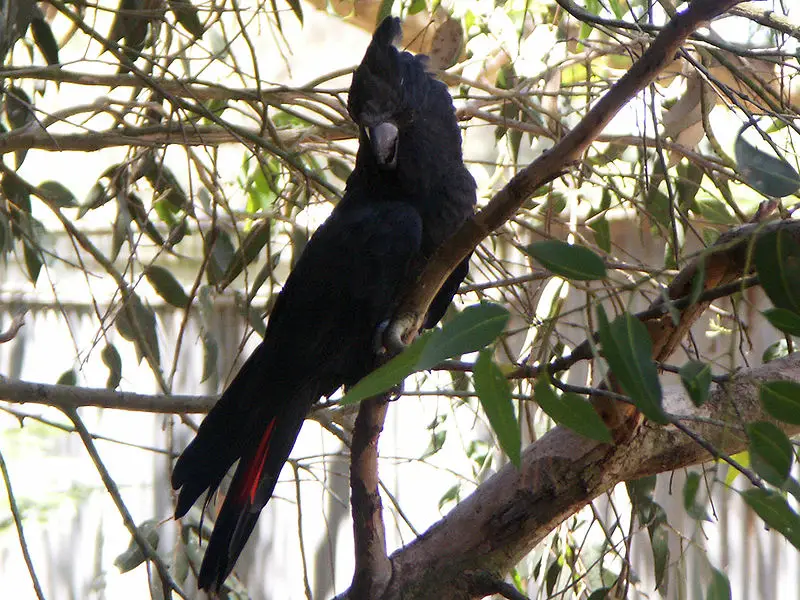
The Glossy Black Cockatoo is the smallest of its species and can be found in eastern Australia.
It has a length up to 50 cm, with males being blackish brown apart from their red tail bands, while females are dark-brown colored with some yellow spotting.
There are three recognized subspecies of this bird: Calyptorhynchus lathami lathami, C.l lroidoma and C.l semitorquatus.
They feed on seeds from native trees such as Eucalypts or Casuarinas but also forage for food near human settlements like farms or grasslands when natural resources become scarce during dry periods in summer time.
The male glossy black cockatoos have been known to make loud calls that echo through forests they inhabit which sound similar to machine gun fire.
Despite being listed as Near Threatened by IUCN Red List due to habitat destruction caused by logging activity, conservation efforts have been made aiming at preserving these magnificent birds so future generations can enjoy them too.
Scientific classification:
| Kingdom | Animalia |
| Phylum | Chordata |
| Class | Aves |
| Order | Psittaciformes |
| Family | Cacatuidae |
| Genus | Calyptorhynchus |
| Species | C. lathami |
Also Featured In: Parrots Species, Queensland Birds You Should Know
13. Variegated Fairywren
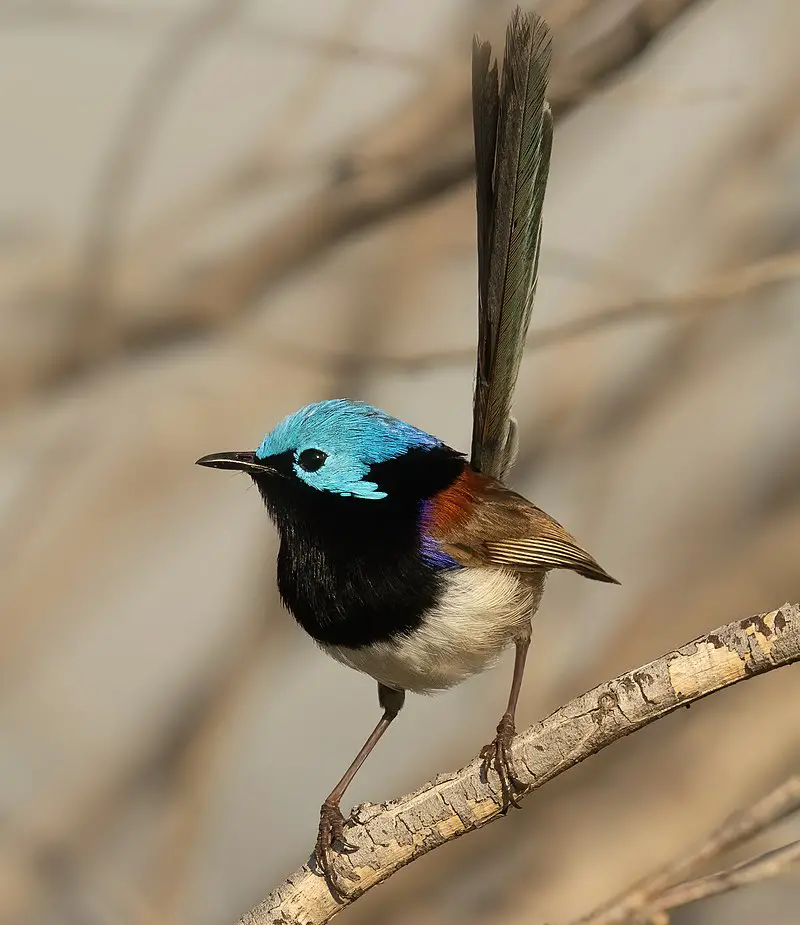
The Variegated Fairywren is a beautiful bird native to eastern Australia. It has distinctive sexual dimorphism, with males being brightly coloured during breeding season while non-breeding males, females and juveniles have grey-brown plumage.
Females of two subspecies are mostly blue-grey in colouration. They inhabit shrubs and bushes near streams or other water sources for their food which predominantly consists of invertebrates such as insects and worms.
These birds also feed on seeds from grasses, sedges and herbs when available in the area they live in.
The nests of these fairywrens are usually built close to ground level within dense vegetation where they can be safe from predators like snakes or cats that could potentially harm them or even snatch away its eggs before hatching occurs.
Scientific classification:
| Kingdom | Animalia |
| Phylum | Chordata |
| Class | Aves |
| Order | Passeriformes |
| Family | Maluridae |
| Genus | Malurus |
| Species | M. lamberti |
Also Featured In: Wrens Species, Birds that Live in Sunshine Coast
14. Red-Browed Finch
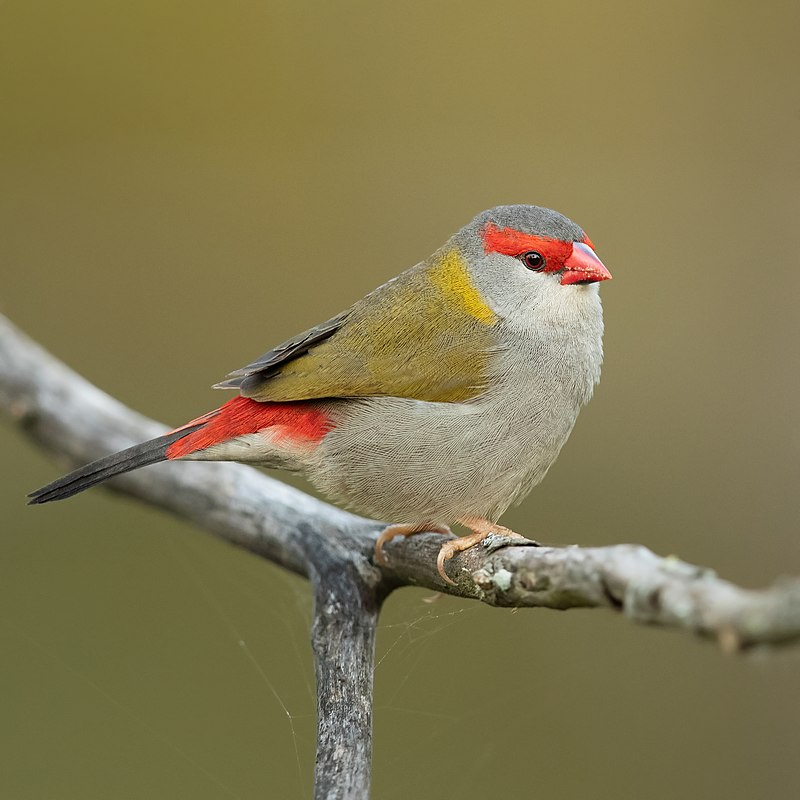
The Red-browed Finch is an estrildid finch that is found along the east coast of Australia. It can also be found in French Polynesia.
The bird prefers to live in temperate forest and dry savannah habitats, but can also be found in dry forests and mangroves in tropical regions.
The defining features of the species include a bright red stripe above the eye, and a vibrant red rum. Despite its small size, the Red-browed Finch is quite distinct and easy to identify.
These birds are known for their active lifestyles and often travel in flocks. They primarily feed on seeds, but may also consume insects and fruit.
As an introduced species, the Red-browed Finch has thrived in new environments, making it a common sight across multiple regions.
Scientific classification:
| Kingdom | Animalia |
| Phylum | Chordata |
| Class | Aves |
| Order | Passeriformes |
| Family | Estrildidae |
| Genus | Neochmia |
| Species | N. temporalis |
Also Featured In: Birds that Live around Brisbane, Small Birds that Live in New South Wales
15. Powerful Owl
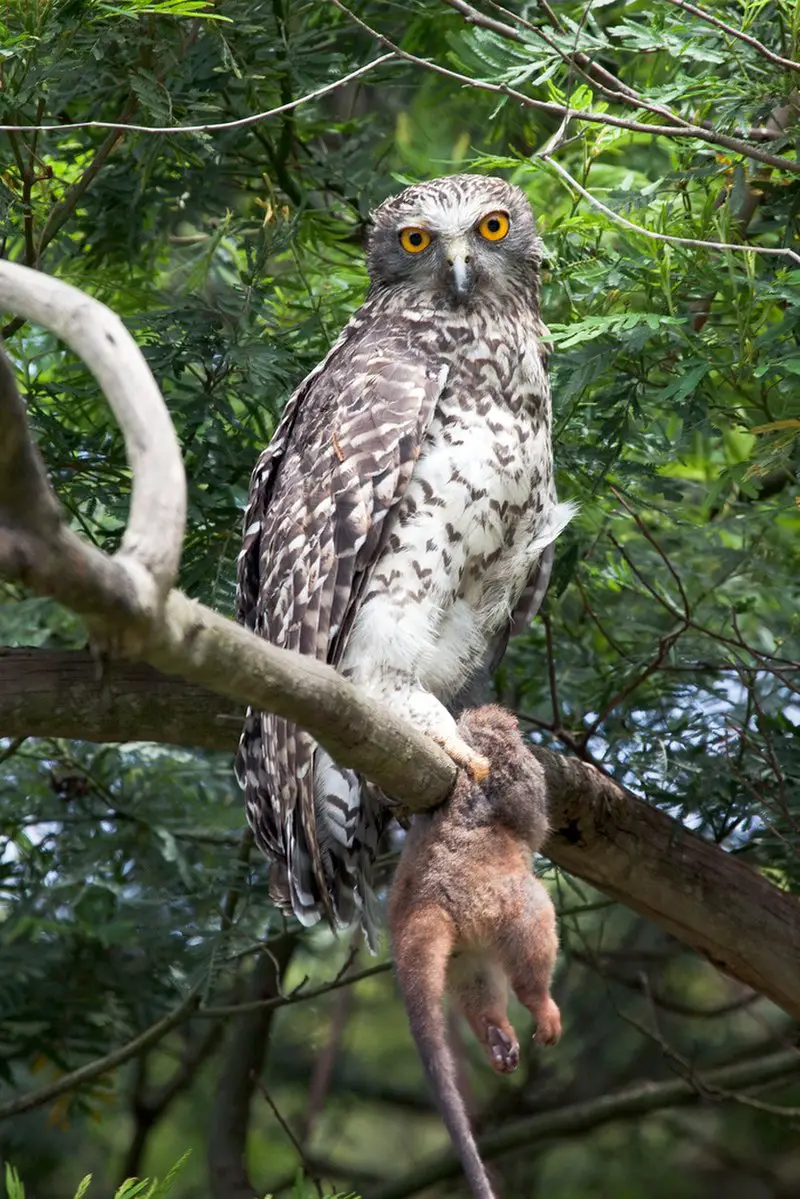
The Powerful Owl, also known as the Powerful Boobook, is the largest owl species in Australia. It can be found in both coastal areas and the Great Dividing Range, though it is rarely found more than 120 miles inland.
These owls are apex predators in their region, hunting a variety of prey. Due to habitat loss, they are listed as a species of concern.
Despite this, they are still able to thrive in some urban areas as long as there is a stable food source available.
With their striking appearance and powerful talons, the Powerful Owl is a magnificent bird and an important part of the Australian ecosystem.
Scientific classification:
| Kingdom | Animalia |
| Phylum | Chordata |
| Class | Aves |
| Order | Strigiformes |
| Family | Strigidae |
| Genus | Ninox |
| Species | N. strenua |
Also Featured In: Birds that Live around Victoria, Common Melbourne Birds
16. Pied Butcherbird
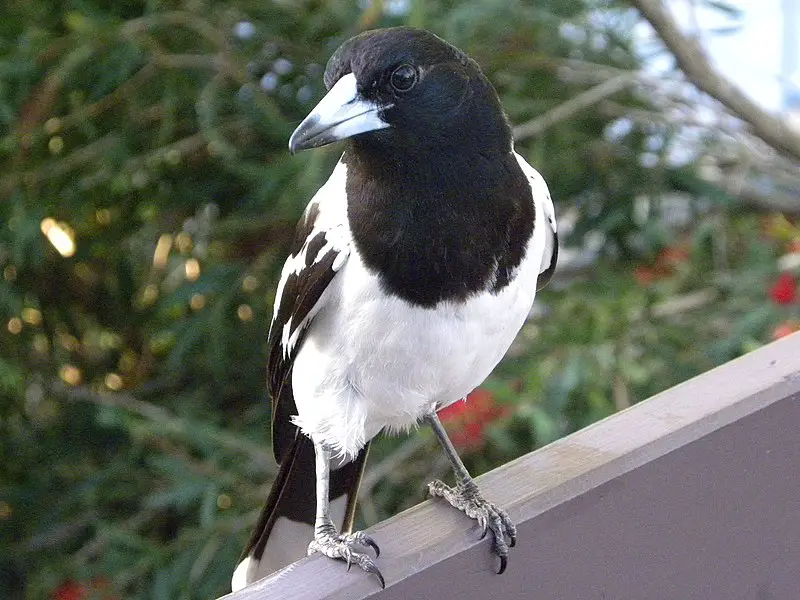
The Pied Butcherbird is a native Australian songbird that measures around 28 to 32 cm in length.
Its striking black and white plumage includes a black hood around its head and throat, as well as black tail and wings, while its neck, outer wings, and underparts are white.
Its long, hook-shaped bill is used for catching prey, usually insects or small mammals. This bird was first described by John Gould in 1837.
The Pied Butcherbird is known for its beautiful, melodious song, often performed in groups or pairs.
The species is common in woodlands and forests across much of Australia, and has successfully adapted to urban and suburban environments.
The juveniles have a more subdued plumage compared to the adults, with a brownish-grey coloration replacing the black feathers.
Scientific classification:
| Kingdom | Animalia |
| Phylum | Chordata |
| Class | Aves |
| Order | Passeriformes |
| Family | Artamidae |
| Genus | Cracticus |
| Species | C. nigrogularis |
17. Eastern Spinebill
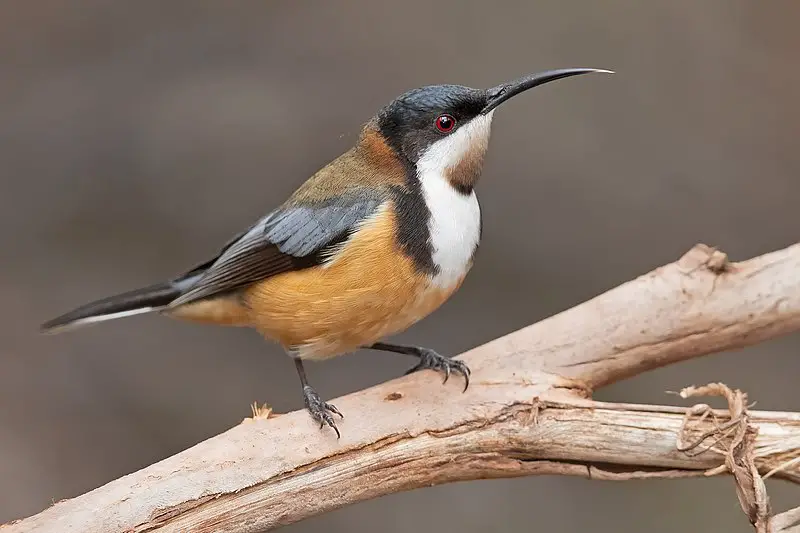
The Eastern spinebill, a honeyeater species, can be found in south-eastern Australia in various habitats, including forest, woodland, and urban gardens in Canberra, Sydney, Melbourne, and Adelaide.
It is distinguishable by its unique black, white, and chestnut feathers, a red eye, and a long bill that curves downwards.
It measures approximately 15 cm in length. The bird was originally identified as Certhia tenuirostris by an English ornithologist.
This bird species is famous for its love of nectar and the way it hovers in front of flowers to feed, leading to cross-pollination.
The Eastern spinebill is popular among birdwatchers due to its eye-catching plumage and its presence in urban areas. The species has an affinity for garden beds that have desirable nectar plants.
This bird is known for its swift and agile flying, which enables it to dart away from predators quickly.
Scientific classification:
| Kingdom | Animalia |
| Phylum | Chordata |
| Class | Aves |
| Order | Passeriformes |
| Family | Meliphagidae |
| Genus | Acanthorhynchus |
| Species | A. tenuirostris |
Also Featured In: South Australian Birds, Birds of Tasmania
18. Plumed Whistling Duck
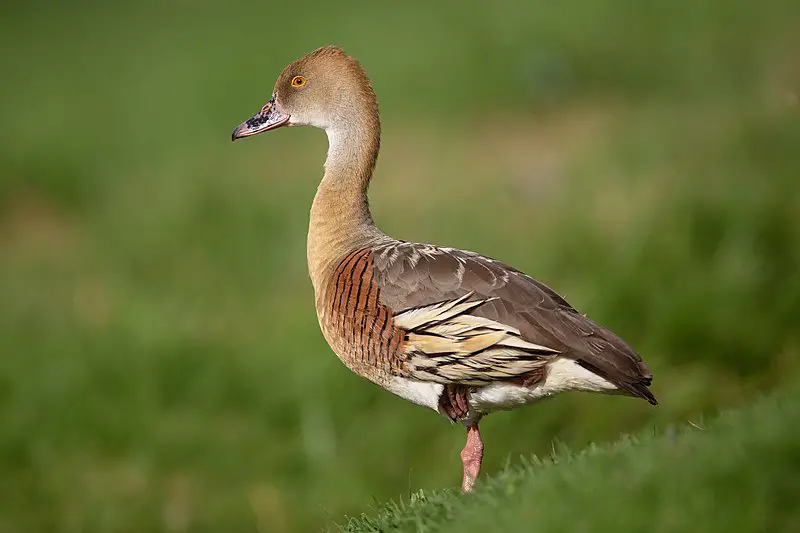
The Plumed whistling duck, also known as the Grass whistling duck, is a species of whistling duck that is native to Australia.
This bird has a long neck and characteristic plumes that arise from its flanks, making it stand out from other duck species.
It is primarily brown in coloration and both males and females look alike. The Plumed whistling duck was first described by Thomas Campbell Eyton, an English naturalist, in 1838, and its specific epithet is named after him.
This bird is often found in wetlands and feeds on a diet of grasses and insects.
It has a unique whistling call, which can be heard from a distance. The Plumed whistling duck is an important species in Australia’s ecosystem, and conservation efforts are in place to protect its habitat and population.
Scientific classification:
| Kingdom | Animalia |
| Phylum | Chordata |
| Class | Aves |
| Order | Anseriformes |
| Family | Anatidae |
| Genus | Dendrocygna |
| Species | D. eytoni |
Also Featured In: Birds that Found in Kakadu National Park,
19. Eastern Yellow Robin
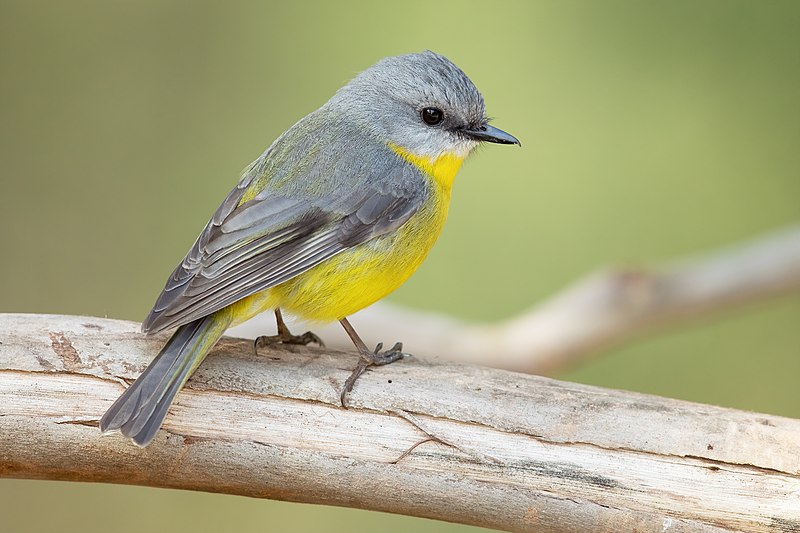
The Eastern yellow robin is a native bird found in coastal and sub-coastal regions of eastern Australia.
With a range extending from South Australia to as far north as Cooktown in Queensland, these birds prefer to live in warm forest areas.
Their bright yellow breast makes them easily recognizable, while their small size and chirpy songs make them a popular sight among birdwatchers.
Eastern yellow robins are known for their friendly nature, often coming very close to humans without fear.
These curious birds are also skilled hunters, preying upon insects and small invertebrates.
In summary, the Eastern yellow robin is a charming bird found in the forests and woodlands of eastern Australia.
Scientific classification:
| Kingdom | Animalia |
| Phylum | Chordata |
| Class | Aves |
| Order | Passeriformes |
| Family | Petroicidae |
| Genus | Eopsaltria |
| Species | E. australis |
Also Featured In: Sydney Birds You Need to See, New South Wales Birds You Need to See
20. Far Eastern Curlew
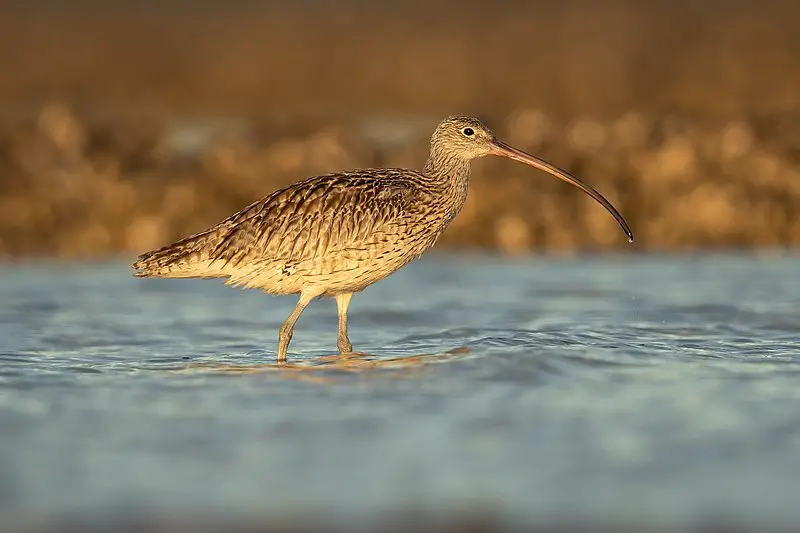
The Far Eastern curlew, also known as Numenius madagascariensis is the world’s largest sandpiper, typically measuring between 60-66cm in length and an impressive 110cm across the wings.
This large shorebird shares a similar appearance to the long-billed curlew, but is slightly larger in size.
The Far Eastern curlew can be identified by its plain, unpatterned brown underwing, which sets it apart from other curlews.
With mostly brown coloring, this species is a sight to behold, and admired by bird enthusiasts.
Despite its size, this bird is known for its grace and agility along shorelines. The Far Eastern curlew is a unique species, and its size alone makes it an impressive sight to see in the wild.
Overall, this bird is an important part of the coastal ecosystem and a fascinating creature to study.
Scientific classification:
| Kingdom | Animalia |
| Phylum | Chordata |
| Class | Aves |
| Order | Charadriiformes |
| Family | Scolopacidae |
| Genus | Numenius |
| Species | N. madagascariensis |
21. Rufous Whistler
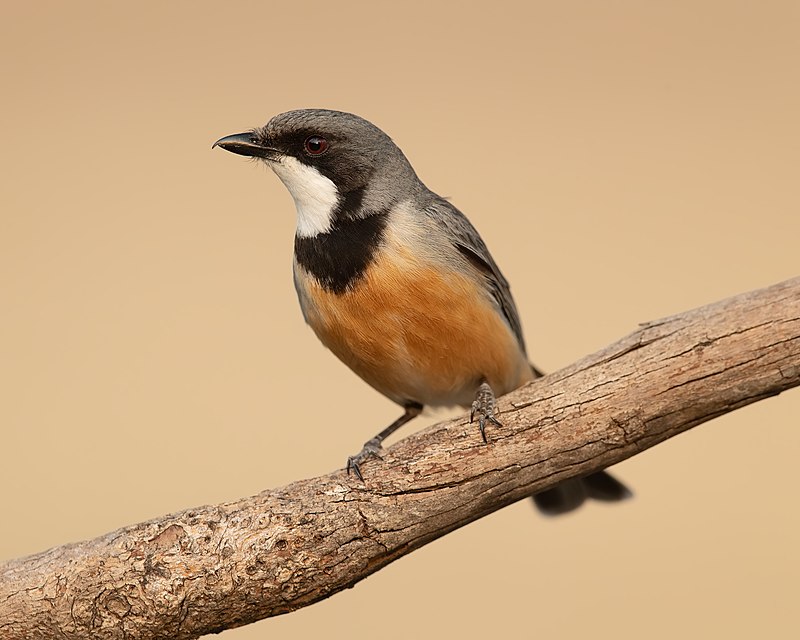
The Rufous whistler has reddish-brown and grey feathers that are not particularly flashy. However, it more than makes up for its subdued appearance with its impressive singing ability.
This bird species can be found in New Caledonia and Australia, where it is known for its variety of melodies and calls.
The Rufous whistler is a member of the Pachycephalidae family, which is known for its many musical calls.
It was initially classified in the Sylvia genus by the English ornithologist J.
Overall, the Rufous whistler is not the most visually striking bird, but its beautiful songs and calls make it a favorite among birdwatchers and nature enthusiasts.
Scientific classification:
| Kingdom | Animalia |
| Phylum | Chordata |
| Class | Aves |
| Order | Passeriformes |
| Family | Pachycephalidae |
| Genus | Pachycephala |
| Species | P. rufiventris |
Also Featured In: Most Common Western Australia Birds, Birds that You’ll find in Perth
22. Australian Golden Whistler
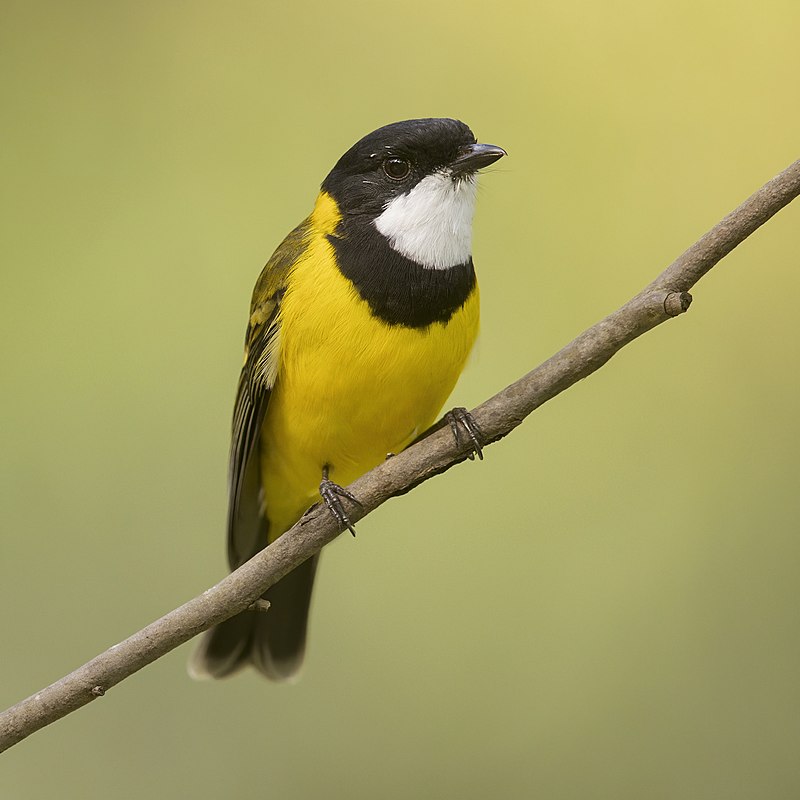
The Australian golden whistler, also known as golden whistler, is a bird species found in various Australian habitats but not in the interior and most part of the north.
They inhabit forest, woodland, mallee, mangrove, and scrub and are mostly residents, but populations in southeastern Australia migrate northwards during winter.
The taxonomy of the Australian golden whistler bird is subject to dispute due to its complex nature.
This beautiful bird has a golden-yellow plumage with a black mask around its eyes, distinctive white eyebrows and throat, and wings and tail with black and white markings.
It is known for its sweet and melodic whistling calls, often heard during breeding season.
Australian golden whistlers mainly feed on insects and fruits, and can be observed foraging in trees and shrubs.
They play an important role in maintaining the ecosystem and are a source of delight for birdwatchers and nature lovers.
Scientific classification:
| Kingdom | Animalia |
| Phylum | Chordata |
| Class | Aves |
| Order | Passeriformes |
| Family | Pachycephalidae |
| Genus | Pachycephala |
| Species | P. pectoralis |
Also Featured In: Birds that Live in Kangaroo Island, Common Flinders Island Birds
23. Beach Stone-Curlew
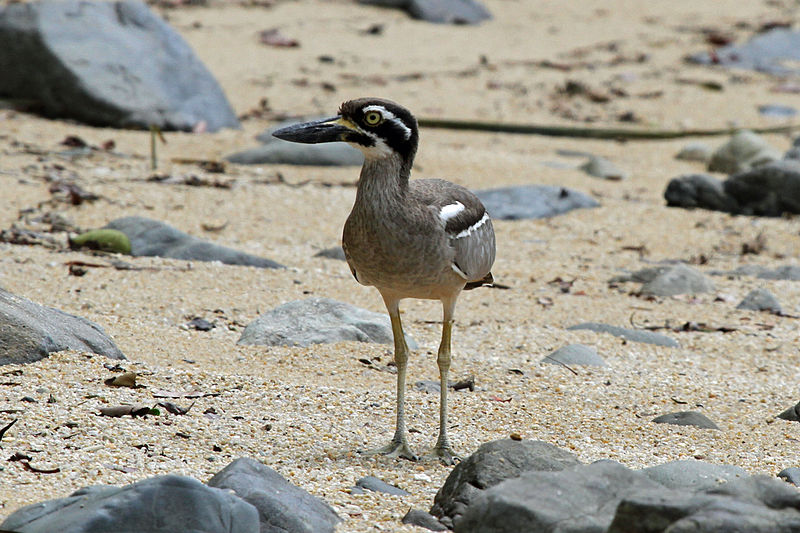
The beach stone-curlew is a large ground-dwelling bird found in Australasia and Southeast Asia. Weighing up to 1 kg, it is one of the largest shorebirds in the world.
With a distinct appearance, this bird has a sturdy body and long legs, making it well-suited for hunting on the beach.
The male species typically weighs a mean of 1,032 g, while the female species weighs around 1,000 g.
Its size and weight make it the heaviest living member of the Charadriiformes family outside of gulls.
The beach stone-curlew is also known as the beach thick-knee, owing to the distinctive thick joint on its leg.
This bird has become vulnerable to habitat loss and hunting, and conservation efforts have been initiated to protect the species.
Scientific classification:
| Kingdom | Animalia |
| Phylum | Chordata |
| Class | Aves |
| Order | Charadriiformes |
| Family | Burhinidae |
| Genus | Esacus |
| Species | E. magnirostris |
Also Featured In: Common Townsville Birds, Birds of New Caledonia
24. Black-Breasted Buttonquail
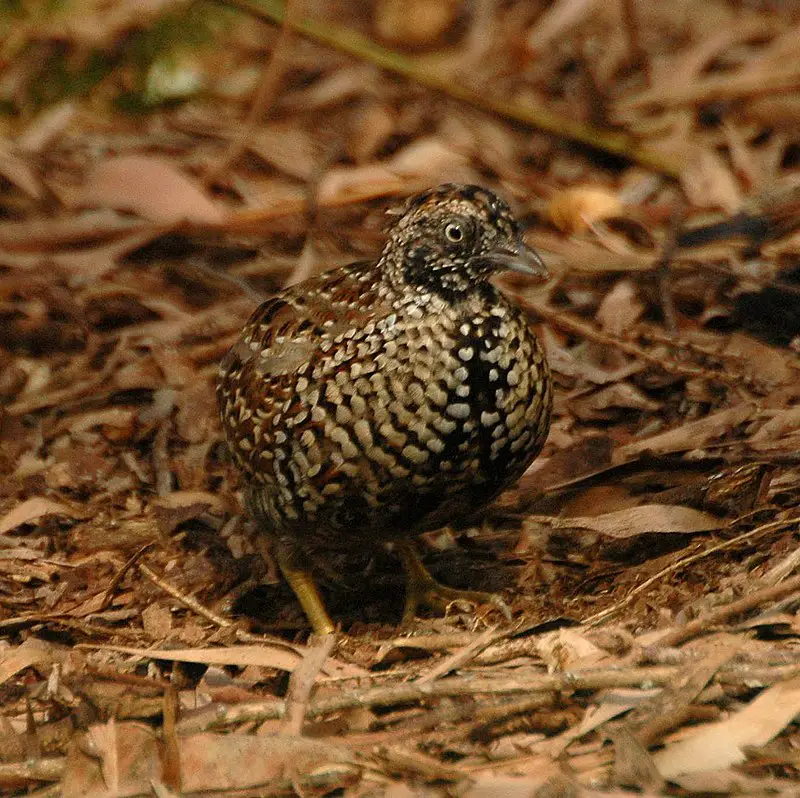
The Black-breasted buttonquail is a unique bird species that can be found in certain parts of eastern Australia. Despite its name, it is not related to true quails.
This plump bird has a distinct quail-like shape and measures around 17–19 cm in length. Its plumage is predominantly marbled black, rufous, and pale brown, and it features prominent white spots and stripes.
Interestingly, it also has white eyes which add to its distinctive appearance. Due to its rarity, the Black-breasted buttonquail is considered an endangered species.
Efforts are being made to protect this bird, especially since its natural habitat has been affected by human activities such as agriculture and land development.
Scientific classification:
| Kingdom | Animalia |
| Phylum | Chordata |
| Class | Aves |
| Order | Charadriiformes |
| Family | Turnicidae |
| Genus | Turnix |
| Species | T. melanogaster |
25. Lewin’s Honeyeater
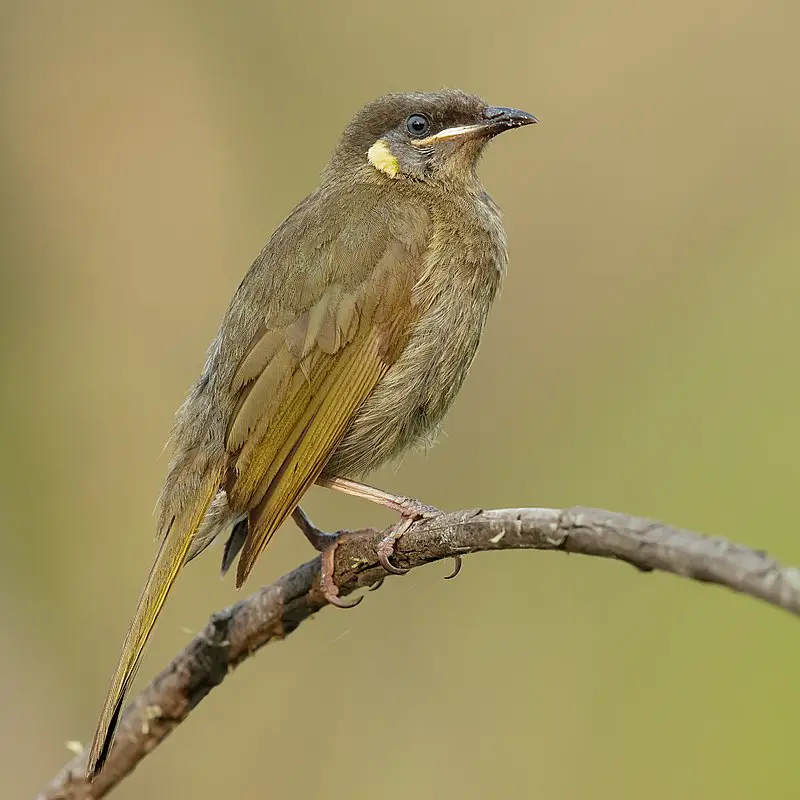
Lewin’s honeyeater is a bird found in the ranges along the east coast of Australia. It is named after the Australian artist John Lewin.
This small to medium-sized bird measures about 20-22 cm in length and has a semicircular ear-patch that is pale yellow in color.
The bird is characterized by its dark greenish-grey plumage and creamy yellow gape. It is known to inhabit a variety of habitats, including forests, woodlands, and shrublands.
Lewin’s honeyeater feeds on nectar from flowers and insects. The bird’s unique appearance and behavior make it a popular subject among bird enthusiasts and nature lovers alike.
Scientific classification:
| Kingdom | Animalia |
| Phylum | Chordata |
| Class | Aves |
| Order | Passeriformes |
| Family | Meliphagidae |
| Genus | Meliphaga |
| Species | M. lewinii |
Also Featured In: Birds Typically Found in Australian Rainforest,
26. Yellow-Throated Scrubwren
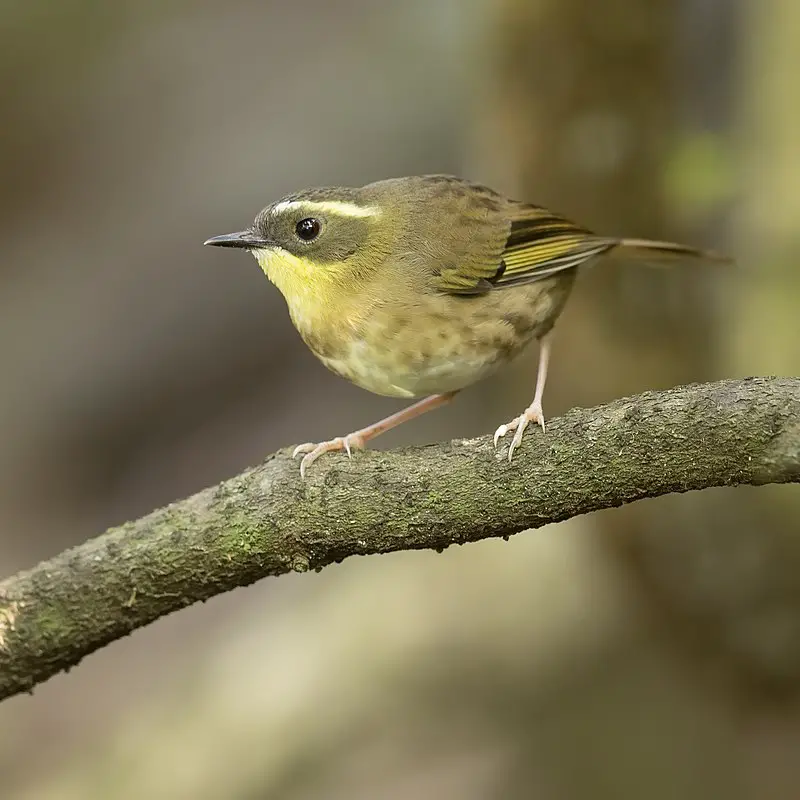
The Yellow-throated scrubwren is a tiny bird found in parts of eastern coastal Australia. It typically lives in wet forests and rainforests and feeds mainly on insects.
This ground-dwelling bird has a striking yellow throat and is a member of the Acanthizidae family.
It was previously classified in the Sericornis genus but is now the sole species in the Neosericornis genus.
Despite its small size, this bird is a keen survivor with an excellent adaptation for living in the wild.
Scientific classification:
| Kingdom | Animalia |
| Phylum | Chordata |
| Class | Aves |
| Order | Passeriformes |
| Family | Acanthizidae |
| Genus | Neosericornis Mathews, 1912 |
| Species | N. citreogularis |
27. Albert’s Lyrebird
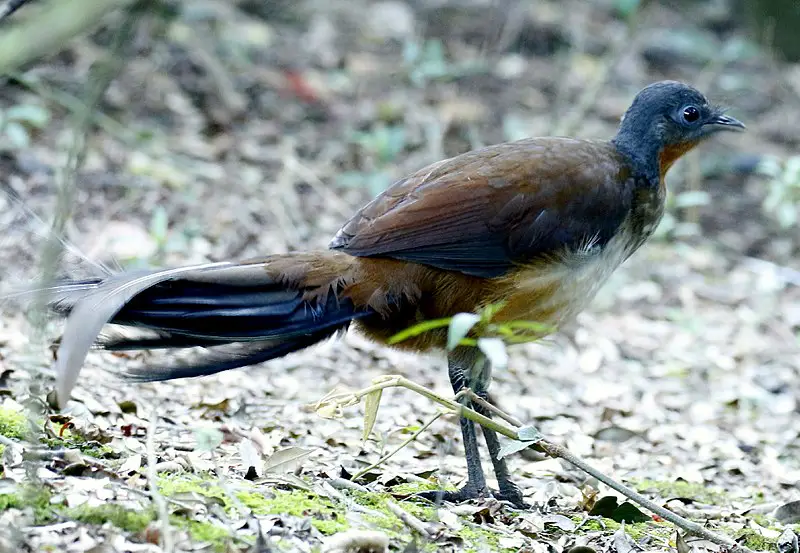
Albert’s lyrebird is a bird species found in subtropical rainforests in Australia. It is a shy, pheasant-sized songbird named after Prince Albert.
This species is rarer compared to other lyrebirds and is known to be endemic to a small region on the border between New South Wales and Queensland.
Unlike other lyrebird species, it does not have an elegant lyre-shaped tail.
Scientific classification:
| Kingdom | Animalia |
| Phylum | Chordata |
| Class | Aves |
| Order | Passeriformes |
| Family | Menuridae |
| Genus | Menura |
| Species | M. alberti |
28. Regent Bowerbird
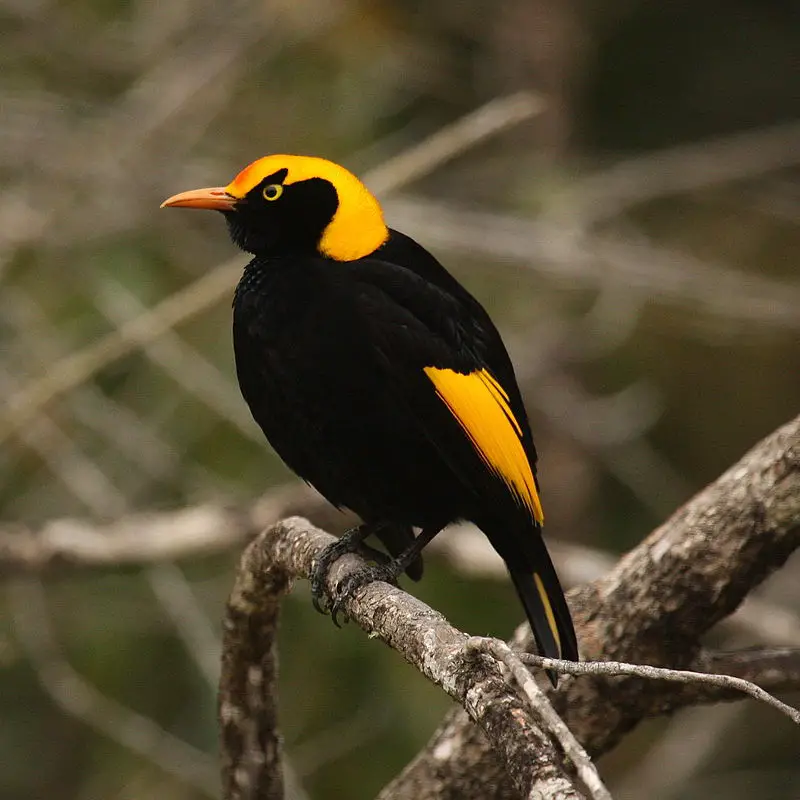
The Regent bowerbird is a distinctive medium-sized bird with sexually dimorphic features. The male bird has a striking black color with a golden orange-yellow crown, mantle, and black-tipped wings.
Its yellow bill, black feet, and yellow iris add to its unique appearance. On the other hand, the female Regent bowerbird is a brown bird with fawn markings, a gray bill, black feet, and crown. The Regent bowerbird’s name is in honor of a prince regent of the Uni.
This bird species is known for creating elaborate bowers decorated with bright objects to attract females during mating season.
Overall, the Regent bowerbird is a fascinating bird species that showcases remarkable features and behaviors.
Scientific classification:
| Kingdom | Animalia |
| Phylum | Chordata |
| Class | Aves |
| Order | Passeriformes |
| Family | Ptilonorhynchidae |
| Genus | Sericulus |
| Species | S. chrysocephalus |
29. White-Browed Scrubwren

The white-browed scrubwren is a small bird that can be found in certain parts of Australia, such as the New England Tablelands and coastal areas.
While it was once believed to be a member of the Pardalotidae family, it is now known that it is actually part of the Acanthizidae family.
These birds primarily feed on insects and can be found in undergrowth areas. They tend to stay close to their habitat and are not often seen in other areas.
Despite their small size, they are known for their beautiful appearance, which includes a white eyebrow that stands out on their dark face.
Their natural habitats have come under threat in recent years due to various environmental factors, making conservation efforts important in ensuring they don’t disappear from the wild.
Scientific classification:
| Kingdom | Animalia |
| Phylum | Chordata |
| Class | Aves |
| Order | Passeriformes |
| Family | Acanthizidae |
| Genus | Sericornis |
| Species | S. frontalis |